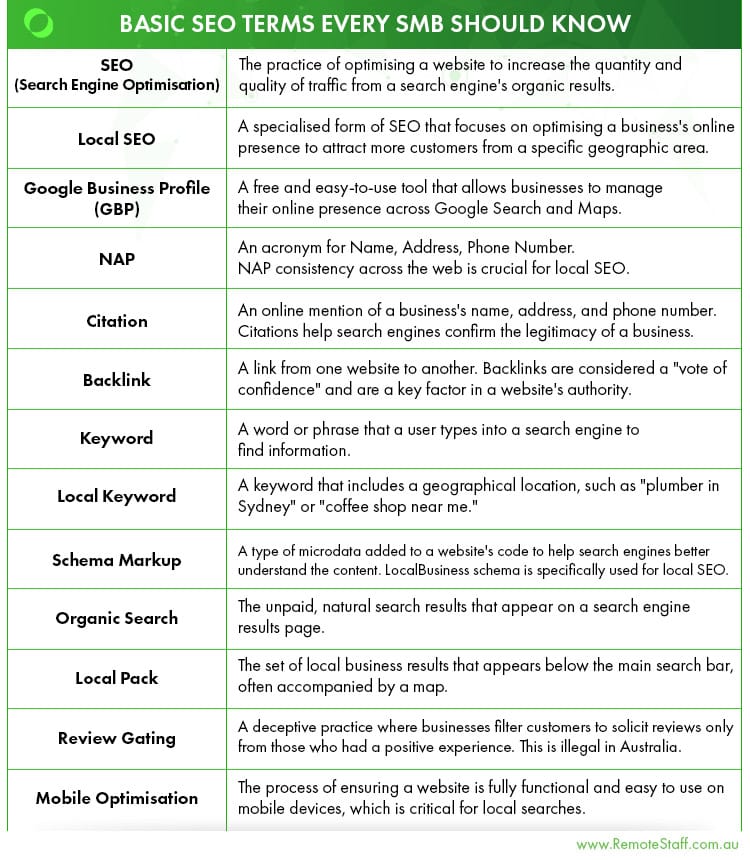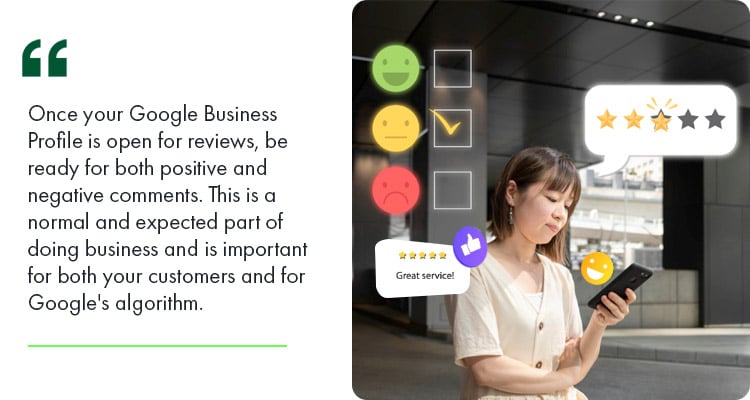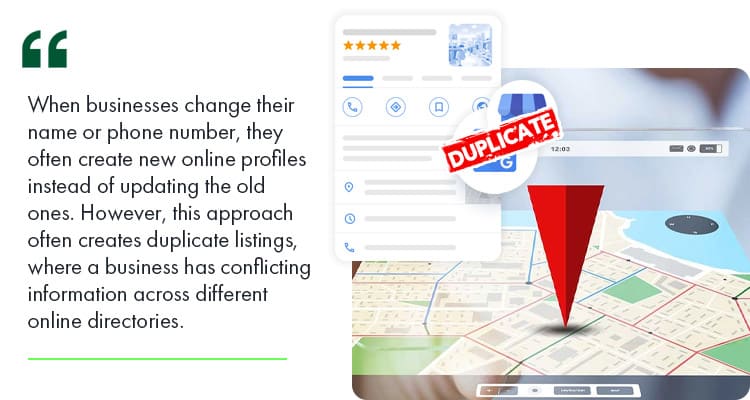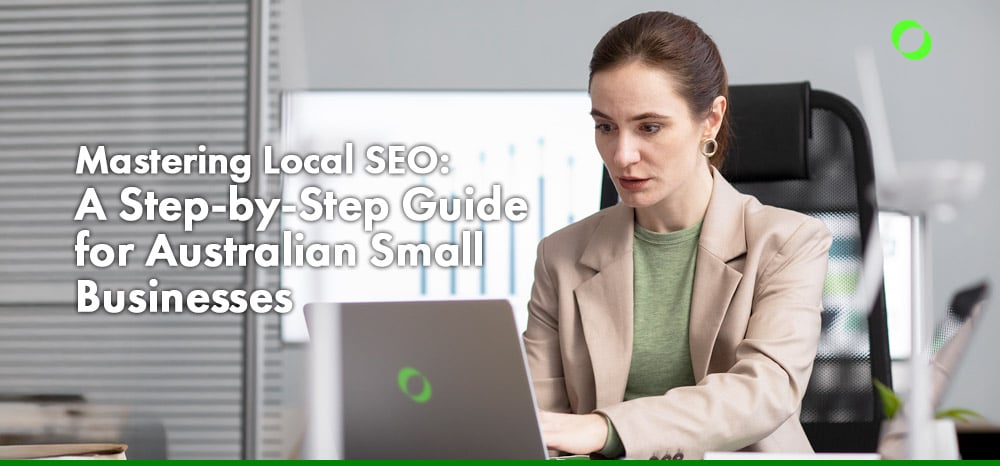Businesses thrive on customer recall and referrals. Satisfied customers bring repeat business, which adds more to a company’s bottom line than one-off purchases. Hence, the need to make sure customers are happy with the service so they come back.
You can market your business using traditional methods like print ads, outdoor advertising, and telemarketing. Alternatively, you can invest in digital marketing through search engine optimisation (SEO), social media, and email campaigns.
Due to the rise of artificial intelligence (AI), businesses are increasingly investing in digital marketing. In particular, there’s growing interest in local SEO, especially for small businesses operating in a specific city or locality.
This article will explore some basic concepts of local SEO and explain why brick-and-mortar and service-area businesses in Australia can gain a significant competitive advantage in their local area by mastering it.
Read on to know more.
Introduction: Why Local SEO Matters for Aussie SMBs
According to the Australian Small Business and Family Enterprise Ombudsman (ASBFEO), small and medium-sized businesses (SMBs), with 0-19 employees, make up 97.2% of the country’s businesses.
However, a 2024 report found that only 42% of Australian local businesses have optimised for local search. This is a stark contrast to the approximately 81% of customers who begin their research online before purchasing products or services near them.
Thus, to address this gap, a growing number of AU SMBs are including local SEO in their marketing strategies.
What is Local SEO and How Does It Work?
Local SEO is the practice of optimising your online presence to attract more customers in your geographic area.
For example, if you have an accounting firm, you can optimise your online presence to appear in local search results and map-based searches whenever someone types in “accounting firms near me” or “accounting firms in (your city).”
This feature is especially critical for brick-and-mortar and service-area businesses that rely on customers visiting their physical locations. Customers, both local and foreign, may not know where to go and will search online for options. This makes having an online presence essential for local businesses, as it ensures they’re among the first options potential customers see.

Local SEO vs. Traditional SEO
SEO can seem intimidating, but it simply means optimising your company website to rank higher in search results.
Traditionally, brands have invested in their websites through keyword research, on-page and off-page optimisation, and content marketing to rank highly in national or even global search results. This allows Aussie stores, for example, to receive orders from other countries.
Local SEO, on the other hand, is its organic, specialised counterpart. Instead of targeting international customers, local SEO for small businesses is designed for brick-and-mortar stores or service-area businesses that serve a local community.
It makes use of Google Business Profile (GBP) optimisation wherein you add your business name, phone number, opening hours, photos, and services. It also makes use of localised keywords that include a location, such as “real estate companies in Sydney” or “coffee shops near Byron Bay.”
How Google Ranks Local Businesses
There are approximately 16.4 billion searches on Google every day, and many of these are from people looking for products or services nearby.
With all these searches, Google ensures that relevant results reach the right audience by prioritising three main factors for local searches: relevance, distance, and prominence.
- Relevance: How well a business matches a user’s search query;
- Distance: How far a business is from the user’s current location; and
- Prominence: How well-known and reputable a business is.
In short, if your business is relevant, nearby, and well-known, Google can show it to potential customers more readily.
Key Benefits for Local Business Owners
Given its targeted nature, local SEO is a powerful advantage for local businesses, especially in areas where competitors are not yet fully utilising it.
Increasing your local digital presence means:
- Attracting the right audience;
- Capturing the attention of customers who are already searching for what you offer;
- Building trust and credibility through online reviews; and
- Strategically competing with big brands through a more affordable form of marketing.

Getting Started: Your Local SEO Checklist
While local SEO might seem complex, a virtual assistant skilled and/or specialising in SEO can make it easier for your business to appear in local search results and on Google Maps:
#1. Set Up and Verify Your Google Business Profile
Local SEO starts with your Google Business Profile, a free tool from Google that allows businesses to manage their online presence. It helps customers:
- Find businesses;
- Get contact information; and
- Avail services.
Conversely, it also allows businesses to interact with their customers by responding to reviews, posting updates, and showcasing their products or services.
Here’s how you can set it up:
- Go to Google Business Profile Manager and create your profile.
- Verify your ownership either via phone call, email, or postcard.
- Complete your profile by adding the following:
- Business name, address, and phone number (NAP);
- Primary and secondary categories that describe your business;
- Business hours;
- High-quality photos of your storefront, products, team, and work;
- List of services and/or products offered;
- Business description; and
- Q&A section to answer common customer questions.
#2. Ensure Consistent NAP (Name, Address, Phone) Across Directories
It’s also important to have a consistent name, address, and phone number across all your online profiles. Google’s algorithm monitors these details to confirm the legitimacy and accuracy of your business information.
After listing your business on key directories like Yelp, Yellow Pages, Facebook, Apple Maps, etc., ensure that your NAP are identical on all platforms, down to the smallest details.
For example, if you used “Street” instead of “St.” on one platform, it should be the same on all the others. Even minor inconsistencies can confuse search engines and hurt your local rankings.
#3. Optimise Website Pages with Local Keywords
In addition, you also need to set up and optimise your website.
While your Google Business Profile (GBP) helps you appear in local search results, your website helps you rank in the organic search results below the local pack.
So, how is this done?
Start by doing local keyword research. You need to think like your customer and figure out what they would type into Google to find your services, such as:
“Best plumber in Perth”
“Dentist near me”
“Bookstore in Brisbane”
“Surf shop bear Bondi Beach”
After keyword research, you should integrate these keywords into your website. Place them in key areas like blogs, landing pages, and service descriptions. You should also use them in your website’s title tags, meta descriptions, and H1 headings to improve your SEO.
#4. Include Location-Specific Schema Markup
Local SEO also needs a schema markup, a type of code added to your website’s HTML to help search engines understand its content and context more effectively.
It tells Google exactly what your business is, where it is located, and how to get in touch. You can either manually add the code to your website or use a plugin or an online generator. Thus, unlike SEO optimisation, this requires some technical knowledge.
Because of this, many Australian small business owners hire outsourcing providers like Remote Staff to find skilled marketers or website developers to tap into their expertise.

Content Marketing for Local Reach
Local SEO doesn’t stop once you’ve created your Google Business Profile and optimised your website.
Aside from filling out your Google Business Profile, you also need to build your reputation and authority in your community through a strong content marketing strategy.
Here’s how.
Creating Localised Blog and Landing Pages
Google’s algorithm prioritises businesses that are relevant, nearby, and prominent. To be prominent, your brand should consistently create valuable content, showcasing your expertise and how you engage with your local audience.
Your website content is what helps you rank high on the organic search results. This is usually done through:
- Localised Landing Pages – If your business serves multiple cities, you can create a specific landing page for each location. For example, a home services company in Sydney could create individual pages for “plumbing services in Bondi” and “plumbing services in Manly.” Each page should contain unique, high-quality content that addresses the specific needs of customers in that area, not just information duplicated from other pages. You can further enhance these pages by including testimonials from local customers and a locally-modified call to action.
- Localised Blog Posts – Blogs are still a crucial part of SEO and an excellent way to provide value to your local community. The key is to publish the right kind of content. For instance, a café could write a blog post titled “The 5 Best Study Spots in Brisbane CBD,” or a real estate company could release a post about “What the New City Council Zoning Means for Homeowners in Perth.” These articles create valuable content that answers questions and strategically positions your business as a knowledgeable and engaged member of the community.
Writing About Local Events, News, and Partnerships
In addition, highlighting your community involvement builds trust. Content that shows your local engagement tells both customers and search engines that you are a legitimate and valued local entity.
- Community Involvement – If you sponsor a local little league game, participate in a community cleanup, or host a charity drive, write a blog post about it. Don’t forget to include photos and quotes from the participants.
- Local News – Offering a unique perspective on a local issue is also a great way to create content. For example, a financial services company could share insights on local tax exemptions or how a new government budget will impact SMBs.
This strategy demonstrates your expertise and connects your business to local conversations. - Collaborations – Moreover, content about partnerships is an excellent local SEO strategy because it helps both businesses reach a wider audience and build their network of local links. For example, a bakery partnering with a local coffee roaster can announce the collaboration on its blog. This is newsworthy content for the local community and can lead to a mutually beneficial exchange of backlinks and social media shares.
Using Testimonials from Local Customers
Brick-and-mortar stores as well as service-area businesses rely heavily on word of mouth marketing and referrals.
However, you should also back this up with online reviews and testimonials by creating a dedicated page for them on your website or by incorporating them directly into your website content.
- Dedicated Testimonials Page – Consider creating a dedicated “Testimonials” page on your website where customers can read positive feedback. To build trust and credibility, include the customer’s full name, suburb or city, and a photo (with their permission).
- Embed Reviews and Ratings – In addition to creating a dedicated page, you can use widgets to embed recent reviews from your GBP or other platforms directly onto your website. This provides a live, dynamic feed of your reputation, which encourages new customers to trust your business.
- Video Testimonials – Encourage happy customers to provide short video testimonials about your business. Video is highly engaging and is a compelling way to showcase your products or services. You can then embed these videos on your website’s home page, landing pages, or a dedicated “Success Stories” page.

How to Build Local Citations and Backlinks
Building your online authority requires a combination of your business’s reputation, online mentions, and links from other websites. Together, these elements demonstrate your credibility, encouraging potential customers to learn more about what you offer:
#1. Submit Your Info to Australian Business Directories
It’s crucial to get your business listed on online directories. These listings, also known as citations, help Google’s algorithm confirm that your business is legitimate. The most prominent and widely-used business directories in Australia include:
- Yellow Pages
- TrueLocal
- Hotfrog
- Yelp
There are also local-specific directories tied to your city or neighbourhood, such as a local chamber of commerce or a community business association.
#2. Partner with Local Bloggers and Media
A backlink is a link from one website to another. Backlinks are fundamental to SEO because they signal to search engines like Google that your content is credible, valuable, and trustworthy.
But how do you get another website to feature yours?
- Offer Expert Insight or Guest Post – You can reach out to local media outlets or bloggers in your industry to offer an expert quote for an article they’re writing or suggest a guest post on a topic you know well. For example, a real estate company could write an article with simple tips on how to design a property to maximise light and space. Within that article, they can subtly link to their own products or services, directing readers back to their website.
- Become a Resource – Meanwhile, some businesses create a resource on their own websites that local bloggers or news sites will link to. For example, a news outlet reporting on energy efficiency might link to a business’s blog that features articles about green energy and energy conservation in Australia. In some cases, these business owners get interviewed or invited as resource speakers, which leads to them being featured in news articles and online magazines. These publications often link back to the business’s website, which helps with their online authority.
#3. Sponsor Community Events or Charities
Since many SMBs are known and well-positioned in their communities, they often sponsor local events or charities. Sponsoring these gatherings is not only good for the community but can also be a valuable source of local backlinks.
When you sponsor an event, your business name and website link are often featured on the event’s website. This creates a powerful, geographically relevant citation that helps Google’s algorithm see your business as a trusted and prominent local entity, leading to higher rankings and more customers.
Therefore, when you provide sponsorship, be sure to ask for your business to be featured on their website with a link back to your homepage. This creates a win-win situation: local organisations get the support they need, and your business can systematically build its online reputation and authority.
Leveraging Online Reviews for Local SEO
Online reviews can make or break your business.
They act as a powerful form of social proof that directly influences how your business is perceived, especially by Google’s local search algorithm. This is crucial because almost all customers now research products and services online before making a purchase.
Encourage Customer Reviews on Google and Facebook
While small business owners often ask for feedback in person or through surveys, for local SEO, your main focus should be on getting reviews on your Google Business Profile.
Additionally, Facebook reviews are also highly valuable for social proof and building brand credibility. Here’s how:
- Ask Directly – Ask customers directly for a review, either at the point of sale, via a follow-up email, or through a text message.
- Make It Easy – Make it as simple as possible for customers to leave a review. For instance, you can generate a direct review link from your GBP and share it on your receipts, website, email signature, and social media.

How to Respond to Positive and Negative Reviews
Once your Google Business Profile is open for reviews, be ready for both positive and negative comments. This is a normal and expected part of doing business and is important for both your customers and for Google’s algorithm.
Responding to reviews shows that you are an engaged and attentive business owner. Regardless of what you receive, here’s how you can deal with them:
- Positive Reviews – When you get a positive review, always thank the customer for their feedback. A simple “Thank you for your kind words, we appreciate your business” goes a long way. To make your response more authentic, mention the specific product or service they enjoyed, which also shows you’ve read and valued their comment. You can even strategically and naturally include a relevant keyword for SEO purposes without sounding forced or unnatural.
- Negative Reviews – It can be disheartening to read negative reviews, however, you can always look at it as an opportunity to improve. More importantly, this is where your professionalism comes into play.
When responding, you have to:- Stay calm and professional;
- Never respond emotionally or defensively;
- Apologise for their negative experience without invalidating their feelings;
- Offer to resolve the issue privately by providing an email or phone number; and
- Be transparent, especially if there was a mistake on your end.
Bad Reviews and the Legal Risks of “Review Gating” in Australia
Many businesses fear bad reviews, which leads them to delete negative comments on social media. Some take this to an extreme by using review gating, a practice where they only ask customers with positive experiences to leave a public review.
For example, a business might send an email asking for feedback. If a customer rates them highly, they’re sent to a public review site like Google. If they give a low rating, they’re directed to a private feedback form instead. While this practice might seem clever, it is actually considered misleading and deceptive under Australian Consumer Law, and may be subject to legal actions.
The Australian Competition and Consumer Commission (ACCC) has made it clear that businesses must not encourage or ask for only positive reviews. The principle is simple: all customers, regardless of their experience, should have an equal opportunity to provide a public review.
Tracking and Improving Your Local SEO Performance
Once you build your local SEO, the work is still far from over. Like any other marketing strategy, you need to:
- Regularly track your performance;
- Identify areas for improvement; and
- Adapt your strategy.
Fortunately, there are many tools and software to help you.
Best Free Tools for Local SEO
Aside from your Google Business Profile, Google provides entrepreneurs with two powerful, free tools that are essential for local SEO.
- Google Search Console – This shows you how your website is performing in search results, including which keywords you rank for and what position you hold. For local SEO, Search Console can reveal the geographically-modified searches that are driving traffic to your site, helping you refine your keyword strategy. It also alerts you to technical issues, such as broken links or mobile usability problems.
- Google Analytics – On the other hand, Google Analytics tells you what people do on your site. It provides valuable insights like:
- How long visitors stay on your site;
- Which pages they visit most often; and
- Where they are located.
This tool is critical for local businesses, as it allows you to segment your audience by location. More importantly, it helps you understand if your local SEO efforts are attracting the right audience and if your website is effectively engaging them.
Local Rank Tracking Tools
To complement Google’s free SEO tools, you can also invest in some specialised local rank trackers which offer more detailed, localised data. These include:
- BrightLocal – BrightLocal is a comprehensive local SEO platform that allows you to monitor and improve local Google rankings for specific keywords in different locations. For example, you can see if you rank #1 for “plumber in Perth” and also monitor your ranking for “plumber in Sydney.”
- Whitespark – Meanwhile, Whitespark’s local citation finder allows you to track your own rankings as well as those of your top competitors. This is a great tool for competitor analysis, as it helps you identify opportunities and refine your strategy to outrank them.
When to Hire SEO Help
While this guide provides many local SEO tips, planning and launching a full-scale strategy can be overwhelming and time-consuming for small business owners who’ve got other things to do.
Thus, many Australian entrepreneurs find it more productive to learn the basics and then delegate the planning and implementation, especially in the following instances:
- When the Work Gets Too Complex – You can start with the basics, like setting up your Google Business Profile. However, you may eventually need help with more technical tasks, such as website audits, implementing schema markup, or running sophisticated link-building campaigns.
- When You Need to Scale – If you’re expanding to new locations or facing increased competition, it helps to have a specialist who can scale your efforts efficiently while you focus on core business functions. This is where outsourcing providers like Remote Staff come in. For over 17 years, Remote Staff has been helping Australian businesses with their marketing campaigns by providing skilled specialists in:
- SEO writing
- Web development
- Digital marketing
- Content marketing
Moreover, these specialists can handle everything from keyword research to link-building campaigns. By delegating tasks remotely, you get expert help without the overhead costs that come with hiring a full-time employee, making it a cost-effective solution for growing business.
Common Local SEO Mistakes and How to Avoid Them
Local SEO can be challenging, especially when you’re just starting out. To help you navigate these challenges, here’s a list of the most common mistakes small business owners make and how to avoid them.
#1. Ignoring Mobile Optimisation
Historically, SEO was focused on desktop computers. However, with the boom of smartphones, a significant number of local searches, particularly those using “near me” or “nearby,” are now conducted on mobile devices. This shift to mobile-first search has made optimising for mobile devices a crucial part of any local SEO strategy.
Because of this, businesses also have to focus on mobile optimisation. This means designing or updating their websites to be responsive, so they automatically adjust to fit any screen size, from a large desktop monitor to a small phone screen.
In addition, you should focus on site speed, which can be improved by:
- Compressing images;
- Using fast hosting; and
- Avoiding unnecessary code.
You can also use Google’s free Mobile-Friendly Test and PageSpeed Insights tools to check your website’s speed and performance and get actionable recommendations for improvement.

#2. Duplicate Listings and Inconsistent Info
When businesses change their name or phone number, they often create new online profiles instead of updating the old ones. However, this approach often creates duplicate listings, where a business has conflicting information across different online directories.
For example, a bakery called “Cakes by Marie” at 123 Main Street in Perth moves and rebrands as “Marie’s Bakery” at 456 Oak Avenue. Instead of updating the old listing on Google and other directories, the owner creates a completely new profile for “Marie’s Bakery.” This leaves two separate listings online, which can confuse both customers and search engines.
Thus, it’s important to regularly audit your online presence by:
- Searching for your business name and all its variations;
- Reporting any duplicate listings to the platform they’re on so they can be removed or merged; and
- Using a centralised platform to update all of your listings at once, ensuring your information is consistent everywhere.
#3. Overlooking Negative Reviews
It can be tempting to delete or ignore negative reviews, but this can actually be more harmful to your business. Leaving a negative review unanswered can make your business appear unresponsive, uncaring, and untrustworthy.
In fact, Google encourages business owners to respond to negative feedback as it’s an opportunity to address a customer’s concerns publicly. When handled correctly, it can potentially turn a negative experience into a positive one – and also help cultivate trust.
How Small Businesses in Australia Can Benefit from Local SEO
Small businesses are the heart of the Australian economy.
To support them, the AU government provides various opportunities for growth. However, it’s also necessary for SMBs to invest in strategic marketing, such as local SEO.
The Competitive Edge Local SEO Offers
Small businesses can’t match the massive marketing budgets of large corporations. However, local SEO allows them to appear at the top of search results and in the crucial Google Maps “map pack,” often outranking much larger competitors.
This is because Google’s algorithm prioritises a small cafe’s location and positive local reviews over a large national chain’s overall website authority. By mastering local SEO, your business can capture the attention of nearby customers who are ready to make a purchase.
Local SEO as a Long-Term Growth Strategy
It’s also important to remember that local SEO isn’t a one-time campaign. Rather, it’s a continuous investment in your business’s future.
The work you put in today will determine your search rankings in the weeks and months to come, making it an asset that pays dividends for years. As consumer behavior continues to shift toward online research and the use of artificial intelligence, a business with a strong online presence is well-equipped to handle the change.
Many of the most impactful tasks – like optimising your Google Business Profile and responding to reviews – are completely free. In other words, local SEO is a cost-effective marketing strategy, making it ideal for small businesses.
Conclusion: Boost Your Local Visibility with Smart SEO
Running a business requires constant innovation and adaptation while keeping a close eye on your marketing expenses. This is especially true for small business owners, who must find the most cost-effective ways to maximise every revenue opportunity.
Thanks to local SEO, this can all be a reality.
You can get your business in front of customers who are ready to buy, whether they are a local resident or a foreign tourist, all without a massive budget for TV ads. You just have to:
- Set up your Google Business Profile;
- Optimise your website;
- Add some keywords;
- Respond to reviews, and
- Consistently produce relevant and valuable content.
But if managing these tasks feels overwhelming, don’t worry.
Many successful Australian business owners learn the basic SEO terms and then partner with Remote Staff for their staffing needs. This way, you can continue building your business offline while a remote worker ensures that your hard work is visible online, especially in search results.
Ready to set up your Google Business Profile and take your business to the top of search results? Call us today or request a call back now.
Syrine is studying law while working as a content writer. When she’s not writing or studying, she engages in tutoring, events planning, and social media browsing. In 2021, she published her book, Stellar Thoughts.




















